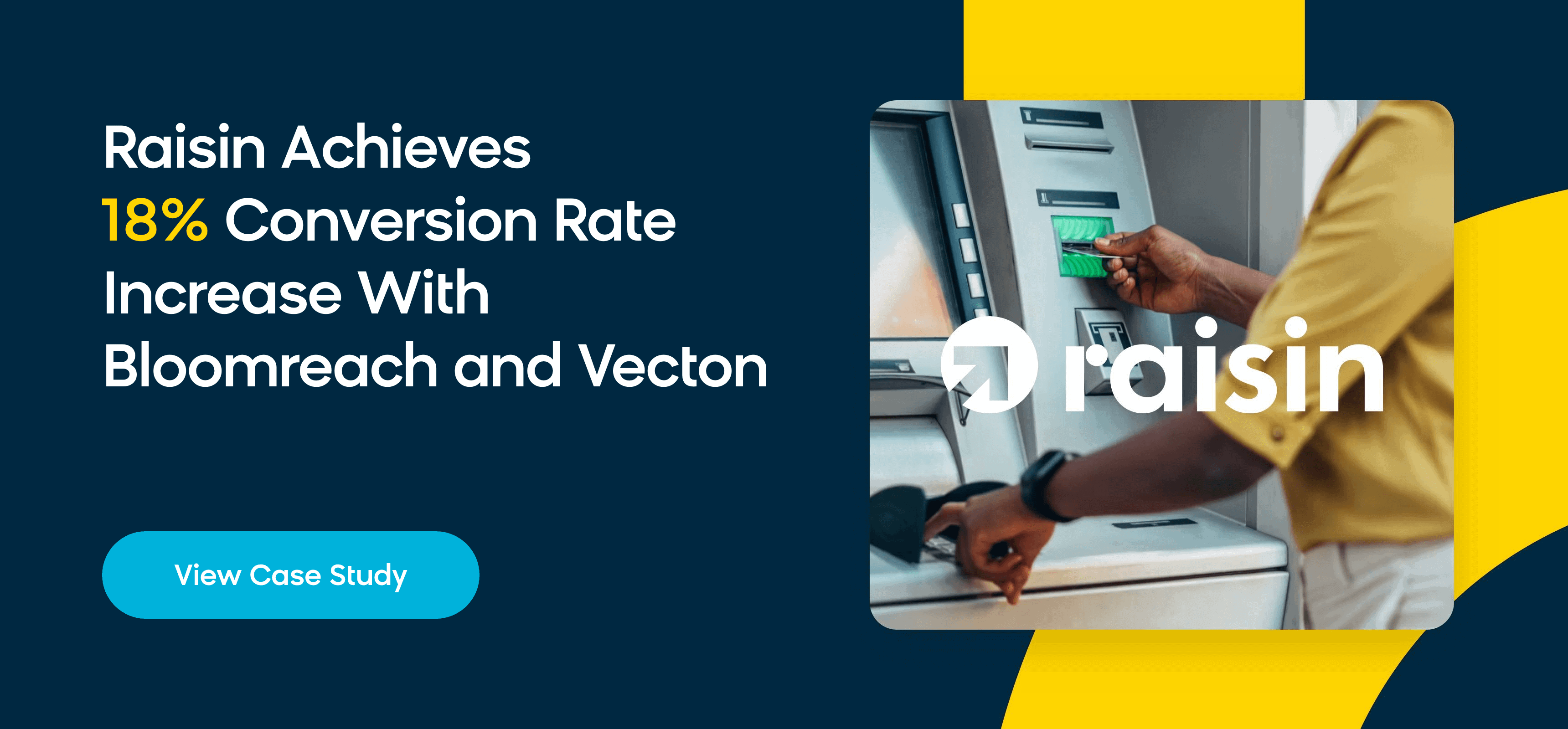Whether it’s books, sporting goods, consumer electronics, cosmetics, fashion, furniture, or groceries, the retail sector covers a multitude of disparate industries. It’s also highly nuanced. For example, there are brick-and-mortar stores as well as online shops. Within online, retailers need to consider different devices, like mobile, laptop, desktop, and tablets — as well as whether they sell directly or via social channels or ecommerce platforms. Retailers can be small independent stores or ecommerce giants. Sales can be B2B (business-to-business) or B2C (business-to-consumer). Purchases can be everyday items, like bread and milk, or seasonal purchases, like Christmas trees and Halloween outfits.
Retail is set for significant growth over the next five years, and to ensure they keep pace with change, retailers are adopting AI tools to support their omnichannel strategies, such as:
- Knowing when to sell products online vs. in-store
- Dynamic pricing to optimize revenue and profit margins
- Targeted offers and promotions to convert more customers
- Addressing fraud to tackle fake reviews
- Allowing customers to self-serve with AI-powered chatbots
In this article, we take a deep dive into the world of artificial intelligence and how the retail sector is leveraging it for competitive gain.
How Is AI Used in the Retail Industry?
AI technologies collect vast quantities of data to gain a complete picture of each customer across several touchpoints — both online and in-store. The technology then analyzes these disparate data sets to better understand each customer, so retailers know where and how to enhance their experience.
Additionally, the insights gained can be used to predict future purchase behaviors and forecast demand, and generally allows retailers to make more informed decisions about their operations. The potential business impact of AI on the retail sector is huge:
- Acquiring more customers
- Retention and loyalty
- Personalization
- Growing average order value
- Increasing profitability
- Understanding customer data
What Are the Benefits of AI in Retail?
The COVID-19 pandemic sparked a transformation in consumer behavior, which accelerated the trend toward online shopping. Most retail categories have experienced at least 10% growth in their online customer base.
The reason that more consumers are turning to online shopping is the enhanced experience, as well as the ability to shop 24/7 with the information they need always available. AI helps retailers go further to offer products/services that are tailored to the individual.
However, AI in retail isn’t just about giving customers what they want. It has countless applications behind the scenes to streamline operations and boost efficiencies.
According to Deloitte, for retailers to be fit for the future, they require lean decision-making processes, sharp analytical skills, and a focus on customer-centricity. AI plays a significant role in delivering all this and more, releasing employees from mundane tasks to focus on the areas where they add the most value.
AI also has a crucial role to play in reducing cart abandonment rates. When 70% of shopping carts are abandoned, AI is there to deliver personalized recommendations at the point of purchase, which influences 92% of shoppers to complete the checkout process. In addition, AI can nudge shoppers throughout the shopping journey through real-time support, promotions at the right time, and updates about shipping, payment methods, and order status.
However, adopting AI isn’t as simple as plugging in a new piece of technology, standing back, and reaping the rewards.
Nearly two-thirds (60%) of retailers fear they lack the specialist skills needed to effectively roll out AI in their organization. While AI can enhance the shopping experience, if it’s not done correctly, it can turn shoppers off. Just think of the marketing campaigns that border on creepy because the retailer has used data in a way that feels intrusive.
Additionally, AI needs to be able to account for bias. Data sets are inherently biased because they use historical data, which shows trends like women purchasing more high heels than men. AI can’t challenge this bias like a human can and will therefore perpetuate the bias, which is why business leaders believe it’s their greatest risk to adopting AI.
Natural Language Processing and AI in Retail
Natural Language Processing (NLP) and computer vision have revolutionized the retail landscape, offering unprecedented opportunities to analyze customer data and leverage predictive analytics effectively. By harnessing the power of NLP, retailers can extract valuable insights from vast amounts of textual data, such as customer reviews, social media interactions, and support tickets. This enables them to understand customer sentiments, preferences, and trends with remarkable accuracy, driving informed decision-making and personalized strategies that resonate with their target audience.
In tandem with NLP, computer vision plays a pivotal role in the retail sector by providing advanced capabilities to analyze visual data. Through computer vision technologies, retailers can enhance customer experiences by identifying patterns in images, understanding product interactions, and even predicting consumer behavior based on visual cues. This synergy between NLP and computer vision empowers retailers to glean comprehensive insights from both textual and visual data, enabling them to create tailored marketing campaigns, optimize product placements, and deliver personalized recommendations to customers.
The integration of natural language processing and computer vision into retail AI algorithms facilitates the creation of robust predictive analytics models. By amalgamating data derived from customer interactions, feedback, and visual inputs, retailers can develop sophisticated algorithms that forecast trends, anticipate demand fluctuations, and optimize inventory management. These predictive analytics not only streamline decision-making processes but also enable retailers to stay ahead of market dynamics, ensuring they meet customer expectations and adapt swiftly to changing preferences.
AI algorithms powered by natural language processing and computer vision empower retailers to unlock the full potential of customer data. Through the seamless integration of these technologies, retailers can gain a comprehensive understanding of consumer behavior, preferences, and purchase patterns. This deep level of insight enables retailers to tailor their offerings, promotions, and marketing strategies to individual customers, fostering stronger brand loyalty, increased engagement, and ultimately, the ability to offer a better customer experience.
AI Use Cases in Retail
Within the next two years, retail business leaders expect AI to have the biggest impact on customer intelligence and chatbots, as well as the personalization of products and services. In the following three sections, we consider the most compelling use cases for AI in the retail industry.
Raisin Uses AI To Connect Customers with Better Products
Raisin is a secure, one-stop savings marketplace that adopted AI to understand the preferences and requirements of every customer. Through the insights gained from analyzing its vast data sets, the company could tailor product recommendations through its banking app. This resulted in an 18% increase in conversion rate, as well as an increase in the overall customer lifetime value.
However, AI in retail banking extends far beyond product recommendations. The AI in the banking industry is expected to keep growing to reach $64.03 billion by 2030, as 40% of younger customers no longer use brick-and-mortar banks.
As online banking continues to rise in popularity, AI will support its adoption through better customer communications via banking apps. On top of the usual activities, like making payments, tracking balances, and checking transactions, users can text questions and receive alerts about potential fraud.
The banking sector is a hot target for cybercriminals who seek to develop new ways to launch an attack and be rewarded through financial gain. AI is a helpful security tool because it can monitor transactions, watch for suspicious behavior, and force the user to double-check and confirm payments that don’t appear legitimate.
From the bank’s perspective, AI can also support lending decisions. Able to analyze vast quantities of data about the customer’s past behavior and the predicted market conditions, it can reach decisions very quickly that reflect the bank’s risk appetite.
HD Supply Uses AI To Improve Site Search for Customers
HD Supply rethought its entire digital strategy to ensure its customers could find the right products and check out quickly. Upgrading its site search with AI resulted in a 16% increase in revenue from search and a 4% increase in add-to-cart rate.
However, AI in the retail supply chain extends far beyond site search. Every year retailers lose about 6,500 hours performing tasks that could be automated and improved with AI — from logistics to inventory and delivery.
AI allows retailers to model different scenarios and predict operational outcomes. For example, natural disasters like wildfires and flooding can affect their supply chain. If a likely risk was deemed too high, early action could be taken to make appropriate adjustments.
Similarly, this can be applied to anticipating demand. During the winter months, respiratory illnesses like COVID-19 and flu spread rapidly. By tracking purchase behavior across stores for medicines and remedies, it’s possible to get an accurate picture of the worst-hit areas and how the virus is spreading. Outlets in those locations can then carry greater inventories of stock.
Woolworths Metro60 Uses AI To Ensure Fast Delivery
The Australian chain Woolworths Supermarkets uses its Metro60 app to deliver groceries to customers in under 60 minutes from the point of purchase. To achieve this impressive feat, the app relies on AI to ingest key customer insights and make data-driven decisions based on customer behavior in real time. Within its first three months, the supermarket chain was delivering on its promise to 185 suburbs.
However, AI in grocery retail extends far beyond personalization. When nearly a third (31%) of consumers expect to spend more on grocery shopping over the next 12 months, there exists a lucrative opportunity for retailers to deliver a frictionless experience because 43% of consumers are willing to pay more for it.
To keep up with in-store demand, retailers can employ AI-powered technologies like shelf-scanning robots. These automatically look for missing items, products that need to be restocked, or price tags that need to be changed. Additionally, smart shelves can assist customers in finding what they need through an app, such as directing them toward “free-from” items.
Online, AI is supporting retailers by allowing their customers to use voice search for greater convenience. Imagine someone is in their kitchen cooking bolognese and using the last of their garlic. Without even stepping away from the cooker, they can ask their smart speaker to add garlic to their shopping basket.
AI in Retail Examples
Ultimately, customers want help in the moment to find what they want quickly and check out with no surprises. AI allows retailers to automatically meet this expectation while becoming more consumer-centric, creating more opportunities to personalize experiences and operate more efficiently. In the following four sections, we explore some of the best use cases for AI in retail:
Demand Forecasting
The more a retailer understands their customer behaviors and market trends, the better they can anticipate demand to present the best possible products. Within AI, machine learning is constantly refining its recommendations by learning what has/hasn’t worked in the past and making appropriate adjustments. This can prove highly beneficial during peak times, like Black Friday, when online sales increase year-on-year.
Machine learning enables retailers to leverage advanced algorithms and data analysis techniques to optimize their inventory levels and ensure product availability. Data from social media, customer feedback, competitor pricing, and website traffic are all analyzed in real time to allow retailers to adapt in the moment based on informed decision-making.
Inventory Management
Closely linked to demand forecasting is inventory management to ensure stock levels remain optimized. By connecting the dots between disparate data sources, AI can forecast trends so retailers can adjust. This could be focusing email marketing campaigns around an upcoming trend to lock in customer interest early, adapting merchandising to align promotional messages with what each customer is interested in, or offering promotions on products where there’s excess stock.
It’s only once retailers have complete oversight of their organization that they can make smart decisions about their future: Which channels to sell specific products through, when to hold and when to drop stock during seasonal fluctuations, when to discontinue a product, how to optimize profit margins for a particular product line or item, and more.
Interactive Chat
Conversational AI has augmented the capabilities of chatbots because they can now simulate human speech to interact with customers rather than respond based on preprogrammed rules. This can assist customers during searches to find what they need, as well as suggest similar items and alert customers when their favorite product drops in price. At the same time, these customer interactions provide valuable data back to the business that can be used to inform future decisions like adding an FAQ section to the website, making shipping details clearer at checkout, or allowing the customer to be alerted when an out-of-stock item becomes available.
Conversational commerce makes it possible to create more engaging customer experiences, which lead to improved customer acquisition, loyalty, and satisfaction for brands over time.
Personalized Marketing
Customers want to feel understood and valued from their very first visit. AI makes it possible for retailers to deliver hyper-personalized experiences by using demographic data, social media behavior, and purchase patterns to understand what a customer might be interested in. For example, brands can prioritize certain shades of makeup in search results or recommend appropriate outdoor wear for different activities.
AI personalization makes it possible to adapt all areas of the shopping experience — from personalized product recommendations and ad targeting to website content, email content, and SMS messages. Plus, it’s effective — fast-growing retailers earn 40% more of their revenue from personalized marketing when compared to their peers.
The Future of AI in Retail
AI in retail is a huge growth market. By 2029, it’s forecasted to reach $52.94 billion, up from $4.84 billion in 2021. Furthermore, when we look at the share of revenue for AI technologies, chatbots, image, and video analytics account for nearly a third (32%), indicating an important shift in the way we shop.
If you want to stay ahead of AI, you’ll need cutting-edge technology like Bloomreach’s suite of products. With Bloomreach Discovery, you get intelligent product discovery trained on over 13 years of ecommerce data. With Bloomreach Engagement, you get omnichannel marketing automation that can deliver real-time personalization on every channel. And with Bloomreach Clarity, you can provide a seamless conversational shopping experience.
All of these solutions are powered by Loomi, our industry-leading AI built for ecommerce. This technology makes it possible for you to create the personalized experiences that consumers crave and that’ll set you apart from competitors. Start unlocking the limitless potential of AI by exploring our use cases.




















